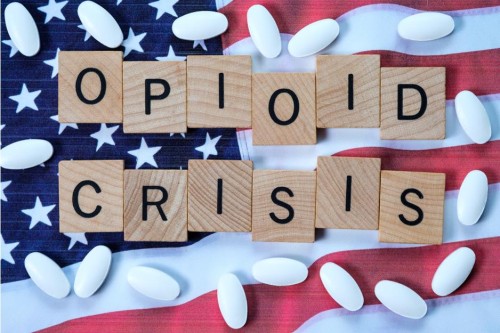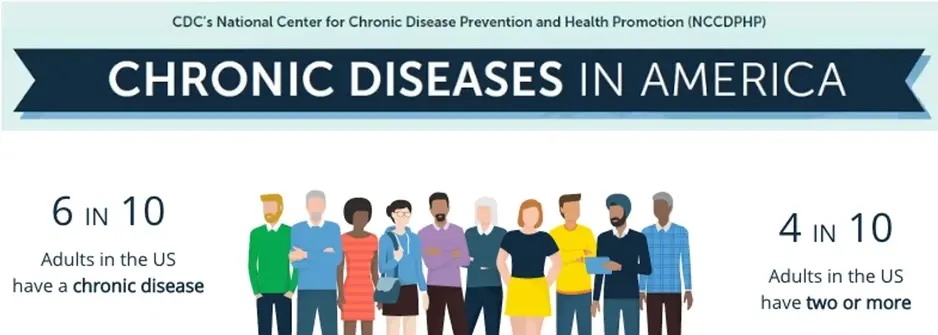21st Century Economic, Human, and Planetary Health Crises
WE Are All Connected - WE Need A WELLthier Living™ World
Global crises are reaching epidemic proportions. Our human connections and interdependence with our planet are undeniable. The impact of human actions, starting with the Industrial Revolution, has had devastating affects on the biodiversity of species and on human and planetary health.
The statistics and predictions for humanity and our planet that are cited here are alarming.
Yet there is hope for the future if WE act now and work together.
We have the knowledge and the people to prevent further harm, reverse chronic conditions, heal our planet, and create a
WELLthier Living World™.
Together We Can Change The Future

In The Global Risks Report 2019, the World Economic Forum (WEF) reported, “The world faced a growing number of complex and interconnected challenges in 2018. We will struggle if we do not work together in the face of these simultaneous challenges."
Some of the interconnected health and economic challenges we are facing are highlighted below.
Let's use them to inspire us to work together to proactively prevent harm, address chronic illness, and create WELLthier Living for ourselves, our families, humanity, and our planet.
Together We Can Create A Healthier Regenerative Planet

Managing the Health Effects of Climate Change, a yearlong study conducted jointly between The Lancet and University College London Institute for the Global Health Commission, reported that “climate change is the biggest global health threat of the 21st century.” Climate change is not just an environmental issue. It has major implications for health, economics, global and local politics, society, culture, education, and security.
Together We Can Restore Balance

We are exceeding Earth's capacities and biodiversity loss is accelerating.
The World Wide Fund For Nature (WWF) is one of the world’s largest and most experienced independent conservation organizations. According to the WWF's Living Planet Report 2016, "The Ecological Footprint represents the human demand on the planet’s ability to provide renewable resources and ecological services. Humanity currently needs the regenerative capacity of 1.6 Earths to provide the goods and services we use each year."
Increased human pressure – such as conversion of natural habitat to agriculture, overexploitation of fisheries, industrial pollution of fresh water, urbanization, and unsustainable farming and fishing practices – endanger key environmental systems and natural resources upon which humanity depends. This is increasing the risk of water and food insecurity and is diminishing natural capital at a faster rate than it can be replenished.
Biodiversity loss is accelerating at an alarming rate. The WWF Living Planet Index shows population declines of vertebrate of 58% and freshwater environment species of 81% in the 42-year period between 1970 and 2012.
Climate change is exacerbating biodiversity loss and the causality goes both ways: Many affected ecosystems—such as oceans and forests—are important for absorbing carbon emissions.
Together WE Can Prevent and Reverse Chronic Diseases
In 2005, The New England Journal of Medicine, one of the world’s most prestigious medical journals, issued a special report forewarning this is the first time in two centuries that the current generation of children in America may have shorter life expectancy than their parents.
In 2018, the CDC reported that US life expectancy declined again for the second year in a row. This is a trend not seen since WWI.
Global Burden of Chronic Diseases
A study, The Global Burden of Multiple Chronic Conditions, issued in the Preventive Medicine Report, found globally, 1 in 3 adults live with more than one chronic condition and accrue a disproportionate health and cost burden. In addition, three in five global deaths are attributed to four major chronic diseases – cardiovascular disease, cancer, chronic lung diseases, and diabetes.
Chronic Disease IS Preventable
While the CDC reports chronic diseases are the most prevalent, most costly (90% of the US's $3.3 trillion of annual healthcare costs are due to chronic and mental health conditions), they also report that they are the MOST PREVENTABLE of all health problems.
Together WE Can Increase Happiness & Health
According to the WEF's report, The Global Risks Report 2019,
“This is an increasingly anxious, unhappy and lonely world."
Anger is increasing and empathy appears to be in decline. Technology addiction is cited as one cause.
Moreover, we don’t know what’s coming next, and our lack of control manifests itself as psychological stress.
Globally, mental illness is rising, with approximately
700 million people now suffering from a mental disorder.
Five of the top 20 diseases “in the global burden of disease” are mental ones.

The National Alliance on Mental Illness, the nation’s largest grassroots mental health organization and America's leading voice on mental health, reports the following statistics in America:
- 1 in 5 adults experience mental illness
- 10.2 million have mental health and co-occurring addiction disorders
- Serious mental illness costs America $193.2 billion in lost earnings every year
- 20% of youths between the ages of 13-18 suffer with a mental health condition.
The World Health Organization reports depression is the leading cause of disability worldwide and is a major contributor to the overall global burden of disease.
Together We Can Help Children Thrive

Nearly 1 in 2 children in the U.S. have experienced at least one Adverse Childhood Experience (ACE). ACEs include:
- Economic hardship “somewhat often” or “very often” (i.e., the family found it hard to cover costs of food and housing)
- Physical abuse
- Sexual abuse
- Emotional abuse
- Physical neglect
- Emotional neglect
- Intimate partner violence
- Mother treated violently
- Substance misuse within household
- Household mental illness
- Parental separation or divorce
- Incarcerated household member
Research demonstrated a strong relationship between the breadth of exposure to ACEs during childhood and multiple health risk factors for adult diseases including ischemic heart disease, cancer, chronic lung disease, skeletal fractures, liver disease, disability, social problems, substance abuse, as well as premature mortality.
Centers for Disease Control and Prevention - Kaiser ACE Study
Together WE Can Reduce Prescription Drug Dependence, Reactions and Crises

Prescription Drug Use in America
Drug Use (in past 30 days)
- Nearly 1 in 2 Americans are on at least one prescription drug
- 23% are on three or more
- 10% are on 5 or more
Physician Office Visits
- Number of drugs ordered or provided: 3.7 billion
- Percent of visits involving drug therapy: 76.2%
Hospital Emergency Department Visits
- Number of drugs given or prescribed: 359 million
- Percent of visits involving drug therapy: 80.4%
Centers for Disease Control and Prevention (CDC), Therapeutic Drug Use
Adverse Drug Reactions

Adverse Drug Reaction (ADR) is a reaction that is identified for a specific drug in the prescription explanation given by the drug manufacturer. In other words, it is an adverse reaction discovered during the drug's clinical trials.
Adverse Drug Event (ADE) is a side effect revealed after usage of the drug and is reported by the patient or the doctor who personally experienced or treated the event.
A US Department of Health and Human Services, Federal Food and Drug Association training presentation explained:
- Most new drugs are approved with an average of 1,500 patient exposures and usually for only relatively short periods of time. However, some drugs cause serious ADRs at very low frequencies and would require many more exposures to detect the reaction.
- There are more than 2 million serious ADRs in hospitalized patients, causing over 100,000 deaths annually
- ADRs are the 4th leading cause of death in the United States—ahead of pulmonary disease, diabetes, AIDS, pneumonia, accidents, and automobile deaths
The CDC reports that adverse drug events (ADEs) cause approximately 1.3 million hospital emergency department visits each year.
The US Agency for Healthcare Research and Quality reports that ADEs are increasingly common, in part because of the substantial increase in prescription drug use.
OPIOID Crises

A Public Health Emergency was declared by the US Department of Health and Human Services, and the CDC reports 130 Americans die every day from an opioid overdose (including both prescription and illegal opioids).
Together WE Can Restore Hope for Children with Autism

Autism Spectrum Disorder (ASD)
The rate of children diagnosed with autism increased 3,300% between the 1970s and 2014
The CDC reports that in the 1960s and 1970s the prevalence of ASD was approximately 4 to 5 cases per 10,000 children (or approximately 1 in 2,000+ children).
In 2018 the CDC determined that approximately:
- 1 in 59 children is diagnosed with an ASD
- 1 in 37 boys is diagnosed with an ASD
- 1 in 151 girls is diagnosed with an ASD
- Boys are four times more likely to be diagnosed with autism than girls
- 1 in 6 children in the United States had a developmental disability in 2006-2008.
US Annual Autism Costs of Care: $268B in 2015 and an estimated $461B by 2025
"We forecast annual direct medical, direct non-medical, and productivity costs combined will be $268 billion (range $162–$367 billion; 0.884–2.009% of GDP) for 2015 and $461 billion (range $276–$1,011 billion; 0.982–3.600% of GDP) for 2025. These 2015 figures are on a par with recent estimates for diabetes and attention deficit and hyperactivity disorder (ADHD) and exceed the costs of stroke and hypertension. If the prevalence of ASD continues to grow as it has in recent years, ASD costs will likely far exceed those of diabetes and ADHD by 2025."
Journal of Autism and Developmental Disorders, Forecasting the Economic Burden of Autism in 2015 and 2025 in the United States

